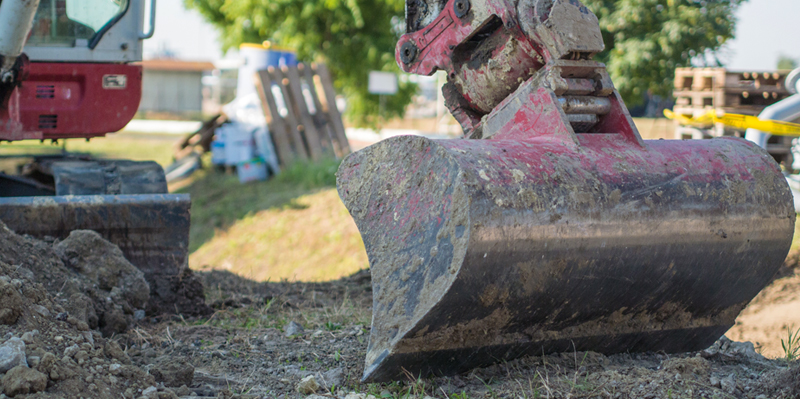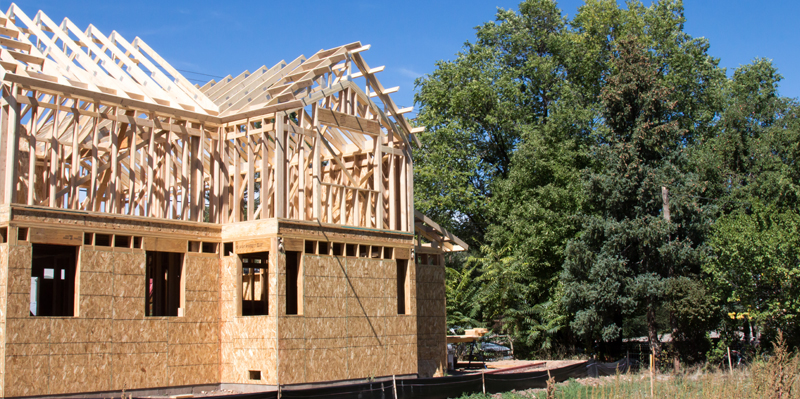During Construction and Landscaping
Print a PDF of this document, click here.

Tree Protection Zone (TPZ):
Tree protection guidelines are designed to minimize damage to trees and their root systems, and provide tree care and maintenance measures to help protect trees during periods of stress and/or times when a tree’s resistance is compromised. Physically protecting the tree and root zones (i.e. fencing), through monitoring, both during and after the construction phase, using protective insect sprays, sub-surface watering, tree fertilization, and installation of tree support systems, will help minimize the risk of tree failure.
Risk:
Risk relative to trees is dependent on a defect in a tree, the size of the part of the tree likely to fail, and the target(s) it might hit if it does fail. Trees by nature, have a certain level of likelihood of failure. Whenever trees and/or their root systems are damaged or impacted, there is an additional level of risk accepted by the owner. Occasionally even using standard tree protection and support methods, certain conditions can still put trees at risk of failure.
Tree Protection Standards
Training:
All workers, and sub-contractors involved in construction, are advised to use caution when working with equipment around trees, to avoid damage to tree trunks, branches, or root flares.
Equipment Use and Storage of Materials:
There will be no equipment use, parking, or storage of supplies or other materials, within Tree Protection Zones (TPZ).
It is crucial for the health of the trees on the property that you protect critical root zones, and minimize soil compaction.
Monitoring: A Certified Arborist is to be on site while construction work is occurring around the trees, to ensure proper care is used to avoid any damage. The Certified Arborist will also monitor that workers are compliant with the standards outlined in this document. A Certified Arborist will be available on-site for clearance pruning and root pruning as needed. A Certified Arborist will also document the number and size of roots cut in all critical dig areas.
 Tree Protection and Maintenance Recommendations
Tree Protection and Maintenance Recommendations
Any roots greater than one-inch diameter should be clean cut by a Certified Arborist at an appropriate position with a sharp hand tool, e.g. hand saw, loppers, pruners etc.
No roots greater than one-inch diameter are to be ripped, torn, pulled apart, or otherwise separated by a backhoe, gradall, or similar equipment. Such roots are to be rough-cut first with a trencher or power saw, and then final-cut as described above.
All exposed roots need to be covered within 15 minutes of exposure. Burlap, concrete covered tarp, FrostGuard, or similar materials may be used, but soil must stay moist during times at which roots are exposed.
There will be no dumping of concrete wash out, contaminants, or cleaning solutions anywhere in, or around the critical root zones. Such materials must be taken off-site, and properly disposed of.
Any necessary branch pruning or removals are to first be discussed with a qualified Certified Arborist from Mountain High Tree.
The entire exposed soil area of all trees on site should be professionally sub-surface watered according to soil condition and ambient weather conditions throughout the project. A Mountain High Tree, Certified Arborist will determine any conditions necessitating such watering.
Contact a Certified Arborist from Mountain High Tree. immediately, if there are any signs of injury, decline, dieback, hazard, or general stress apparent during or after this project, in order to evaluate the condition of the trees, and recommend remedial measures.
Call our Colorado Springs Office: 719.444.8800
or contact us online:
![]()


